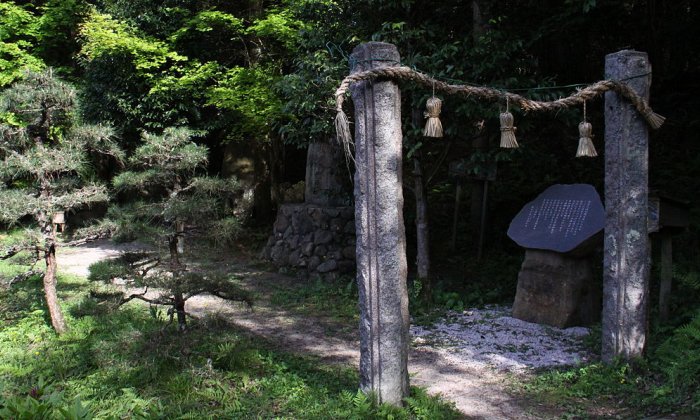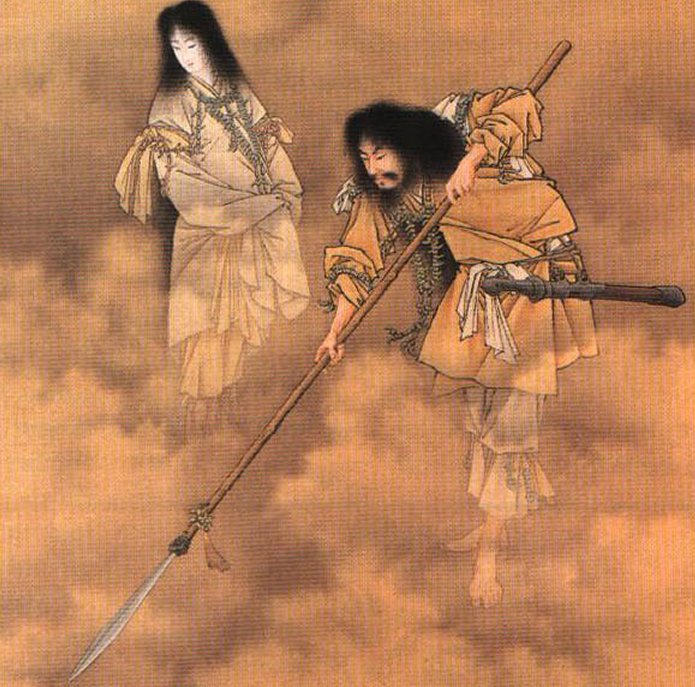A. Sutherland – AncientPages.com – The Japanese mythological Kingdom of the ᴅᴇᴀᴅ is often referred to as Yomi. In Japan’s native Shinto religion, Yomi-no-Kuni is the Shinto underworld, as described in the Kojiki, Japan’s oldest chronicle and source for many Shinto beliefs across the centuries.
The Yomi’s other names include the “Land of The ᴅᴇᴀᴅ (“Land of Darkness”).

Yomotsu Hirasaka is the slope that leads to Yomi. This is Legend place in Higashiizumo, Shimane, Japan. ChiefHira – CC BY-SA 3.0
It was considered a place of darkness full of demons and evil gods who attacked and pursued all who got there.
The ruler of this terrible Kingdom was Emma-O, the judge of the ᴅᴇᴀᴅ, who lived in an underground castle made of metals and gemstones mined from the underworld.
When evil people died and came to Yomi, they were forced to wear signs around their necks with a list of their sins. Based on the sins, Emma-O pronounced his verdict over the deceased who were put before him. He punished the guilty souls and sent the innocent to earth to be reborn.
In Yomi, there were 80,000 demons whose task was to carry the ᴅᴇᴀᴅ to the realm of the ᴅᴇᴀᴅ, introduce them to Emma-O, and then torture them according to his orders and his verdict.
The underworld is the prominent place destined for all who die and must enter this realm for a trial. In Brittany’s fairy folklore, a frightening spirit Ankou (“death”), appears as a dark shadow driving a black cart pulled by four black horses and ᴀssisted by two skeletons who help Ankou to collect the souls of the ᴅᴇᴀᴅ.
The Aztec and Mayan mythologies describe what will happen to the spirit once the individual has died.

Kobayashi Izanami and Izanagi. Painting by Eitaku Kobayashi showing Izanami and Izanagi consolidating the land with the spear “Ama-no-Nuboko” – Public Domain
The ancient Maya believed that the underworld – Xibalba, was a terrible, nine-leveled underground place of fear ruled by the lords of death. In some old accounts, it is a domain of evil demons, busy plotting against heaven’s gods. In other versions, Xibalba is a place of decay and disease and a destination for human souls after death. The Aztecs believed that each soul wandered through the layers of Mictlan until it reached the deepest level.
The fate of the deceased was determined based on how this person died.
In one story, Izanami (‘Female-who-invites’), one of seven gods in Japanese mythology, died and entered the Yomi (“Land of Gloom”). Izanagi, her husband, descended to Yomi to get his wife back. She agreed to return with him to the world of the living, but only on the condition that he would wait for her without entering the Land of the ᴅᴇᴀᴅ. Unfortunately, Izanagi did not keep his promise. He approached Izanami’s ᴅᴇᴀᴅ body and saw it decomposing and full of worms while eight gods of thunder guarded the whole ritual.
The Land of the Living and the Land of the ᴅᴇᴀᴅ have laws and prohibitions.
According to ancient Japanese beliefs, outsiders should not disturb and observe the rejuvenation process. The ᴅᴇᴀᴅ should not be observed during the process of transition. Izanagi broke Yomi’s rules.
Finally, horrified Izanagi managed to flee to the world of the living, but it cost him. The demons and gods of thunder chased him, and he had to use his magic, sword, and other magic items to escape.
*Running for life, he approached the underworld’s gates and stumbled upon a peach tree. This tree was certainly not any ordinary tree but must have had certain magical powers. Plucking three peaches from this tree, “he hurled them at his attackers and drove them back into the underworld.
This time, Izanami herself went after him. Izanagi took a giant boulder and blocked the entrance to Yomi-no-Kuni, forever separating the underworld from the earth and himself from Izanami. Here they said their final farewells.” 1
This terrible experience made him feel nasty and dirty, but it was worth the effort. The boulder remains to block the pᴀssage to the underworld. “The pᴀssage to the underworld may not be a physical space, but rather, a state or period between when you stop breathing and actually die. 1
Written by – A. Sutherland – AncientPages.com Senior Staff Writer
Updated on December 16, 2023
Copyright © AncientPages.com All rights reserved. This material may not be published, broadcast, rewritten or redistributed in whole or part without the express written permission of AncientPages.com





